Abstract
Two hundred and nine patients consecutively admitted to hospital with a tentative diagnosis of meningitis were screened for complement deficiency by measuring classical and alternative pathway serum haemolytic complement activity and the plasma concentration of C3d. Abnormal test results were followed up by quantitative immuno-chemical measurements of individual complement components. No patients with homozygous complement deficiency were found in our material. One patient with pneumococcal meningitis with probable heterozygous C2-deficiency was identified. Patients with purulent meningitis of various etiologies or meningococcal disease had significantly increased plasma C3d concentration at admission compared to patients with serous meningitis or without meningitis. Furthermore, increased plasma level of C3d at admission in patients with purulent meningitis or meningococcal disease was associated with an increased lethality. Our findings do not support the hypothesis that complement deficiency is commonly associated with sporadically occurring meningococcal disease or purulent meningitis.
Full text
PDF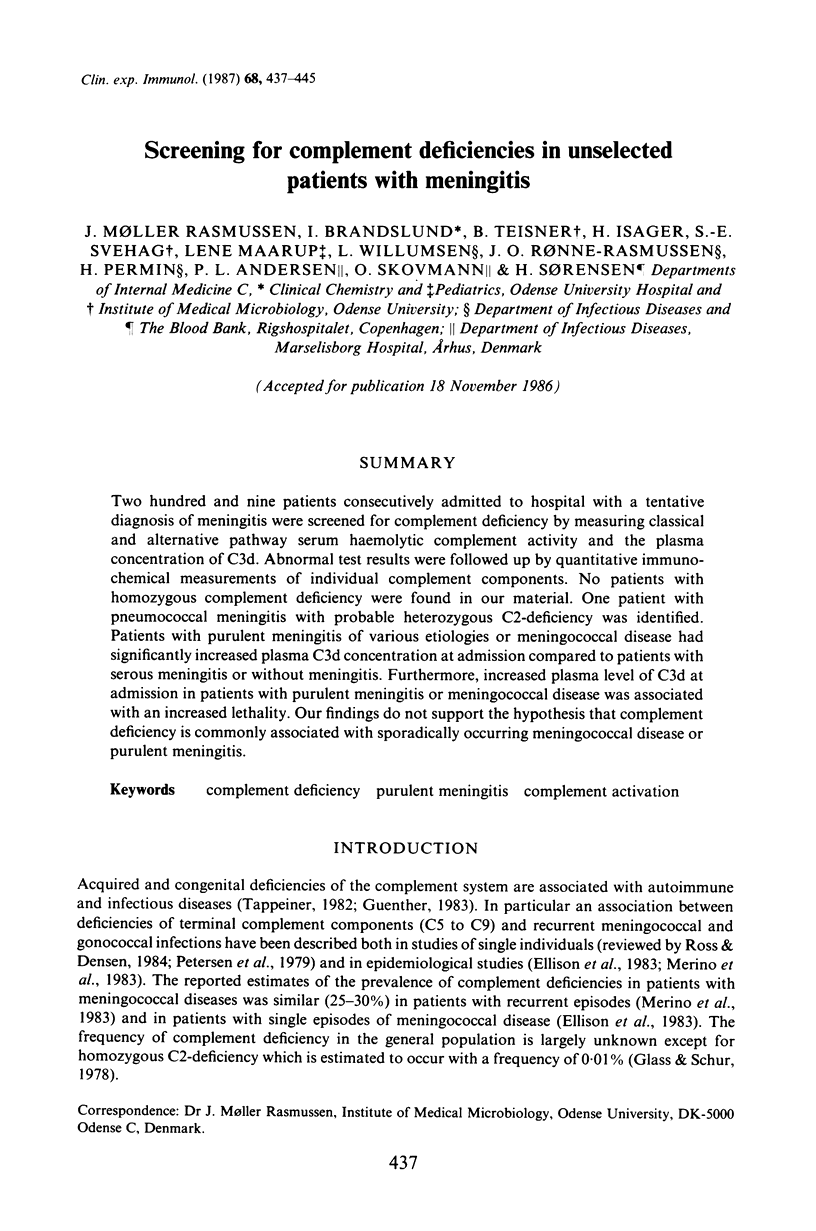
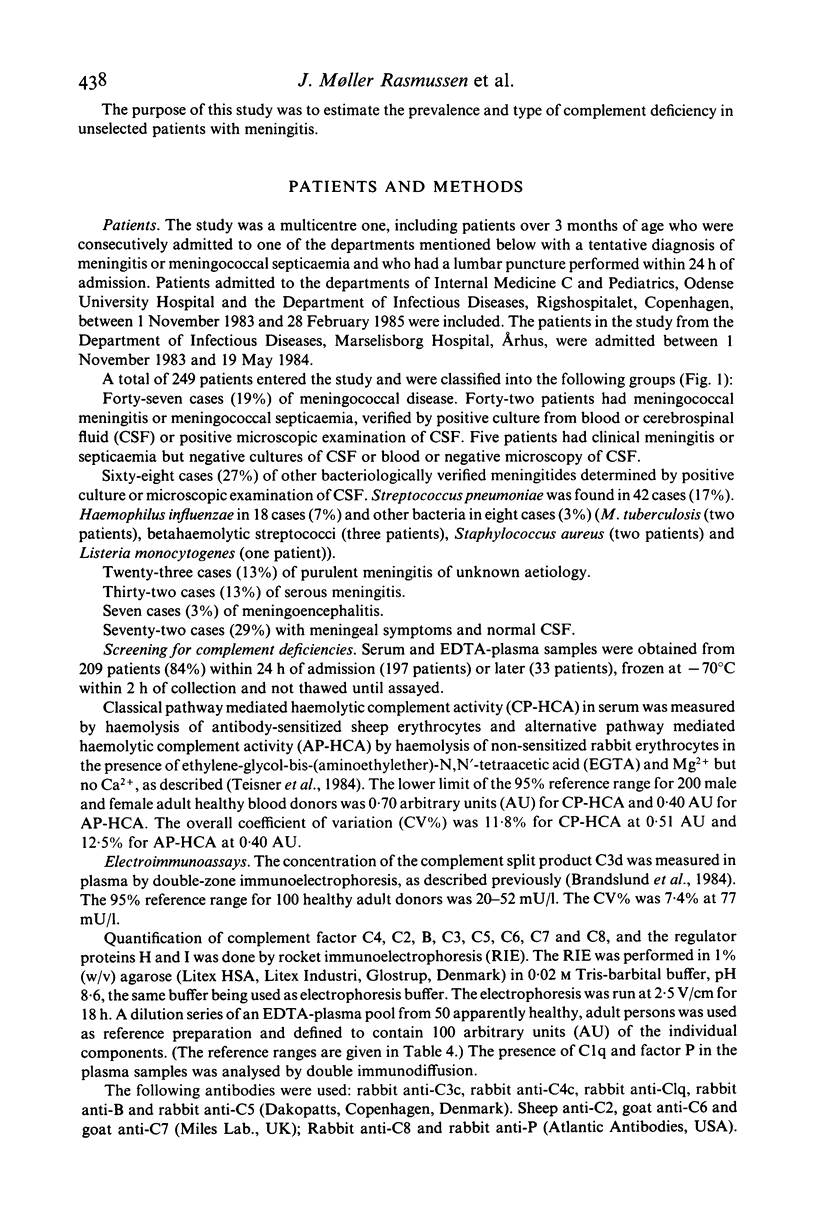
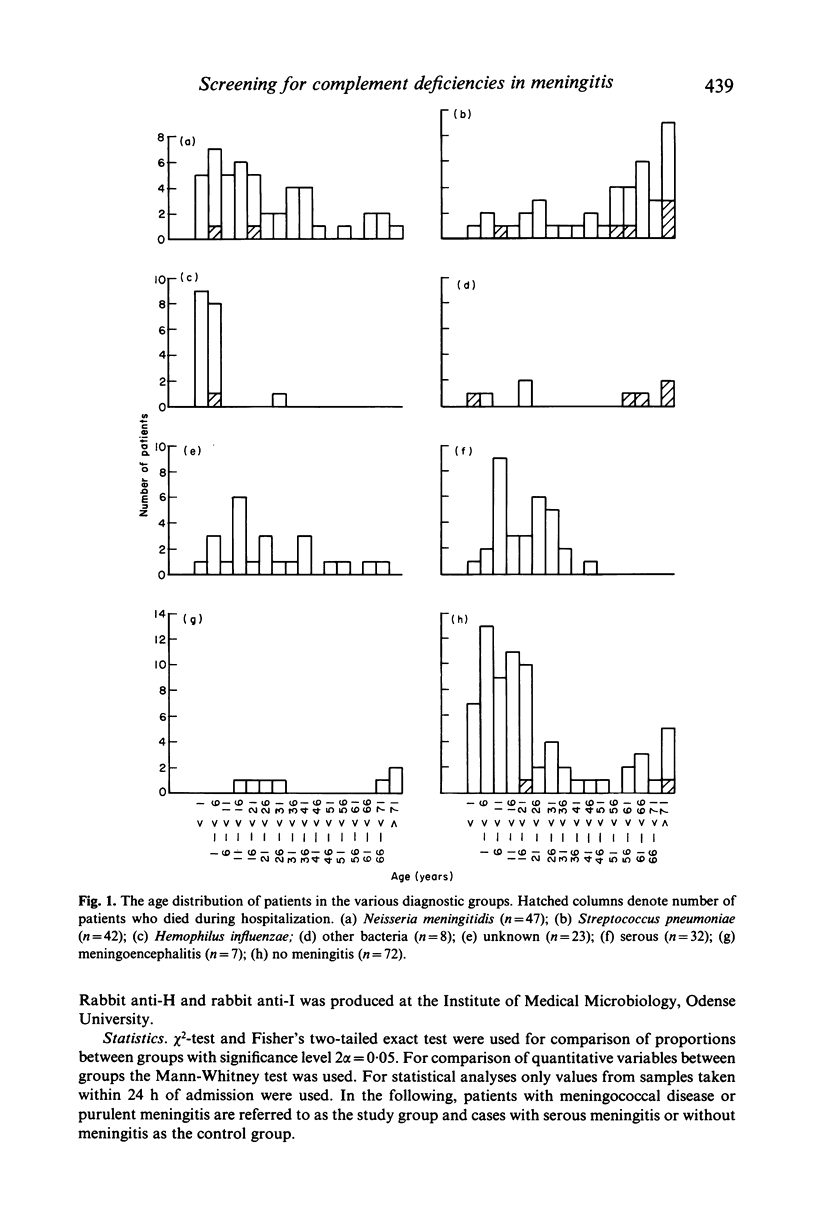
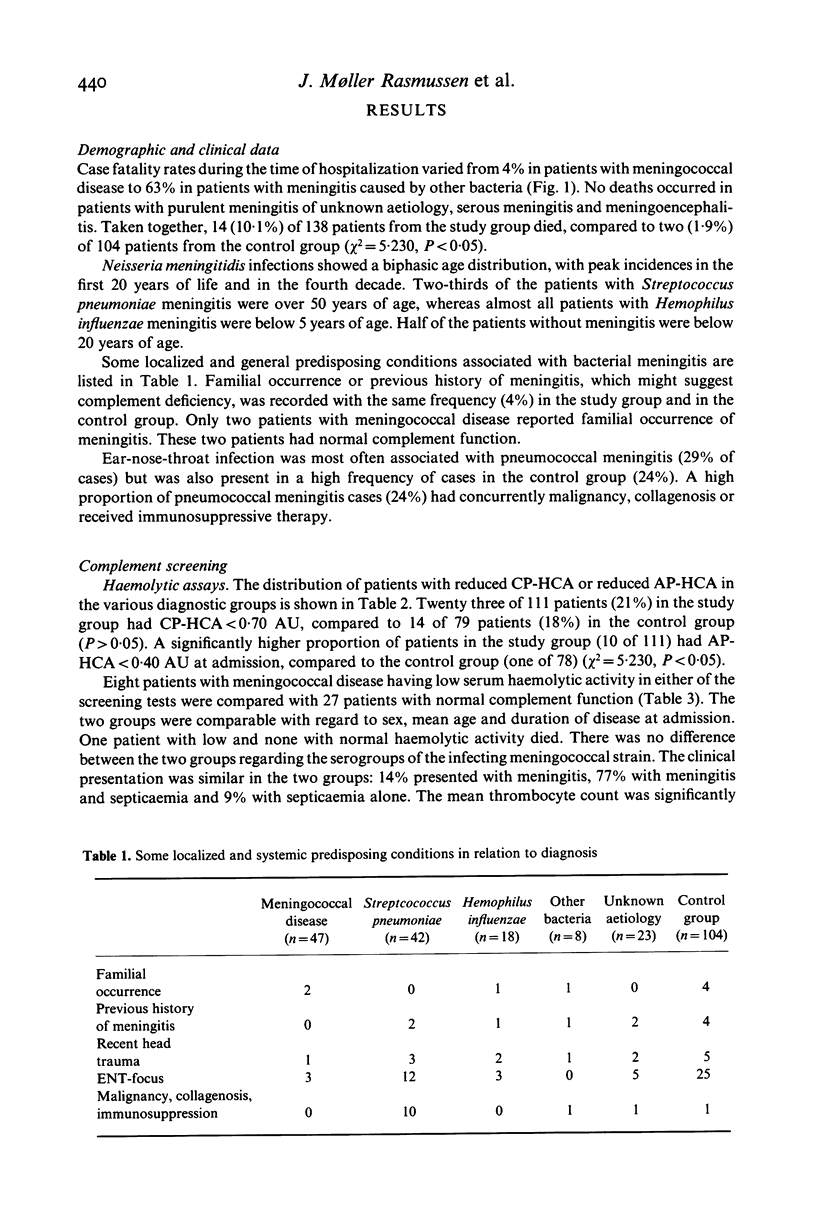
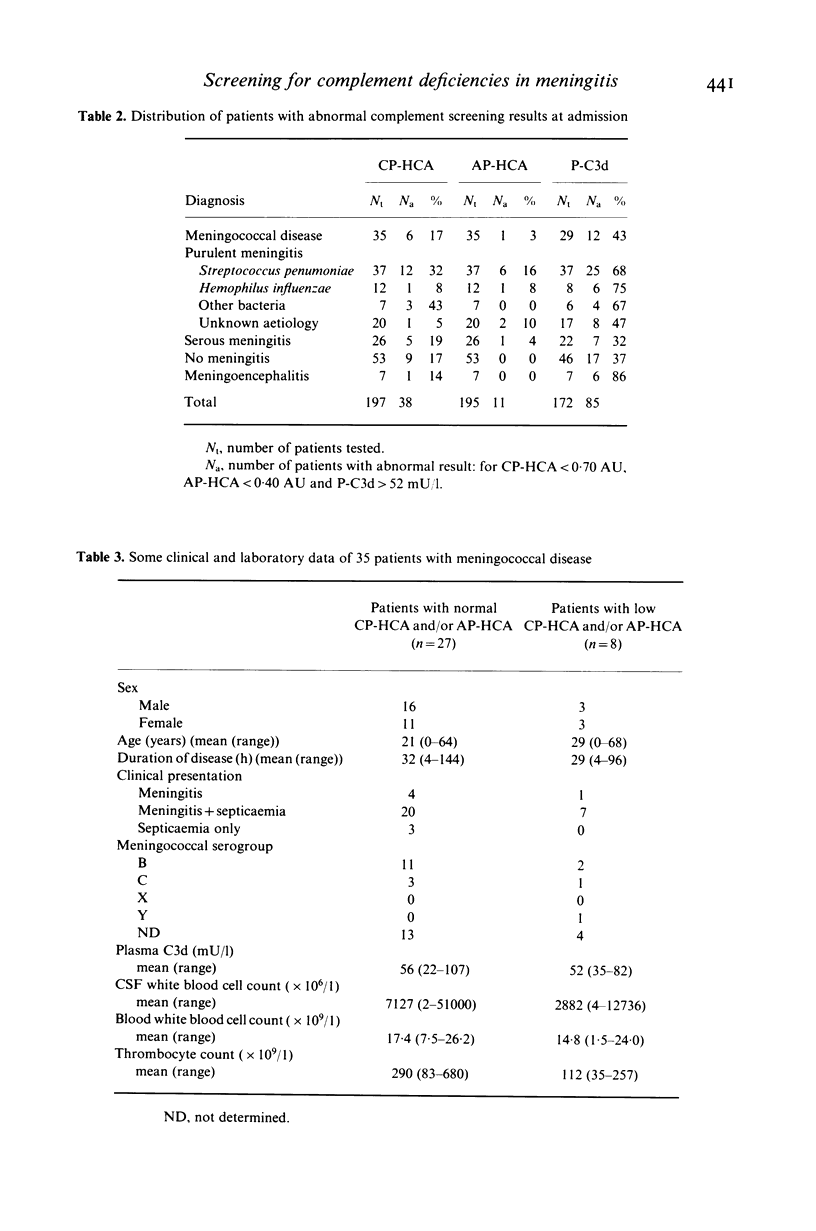
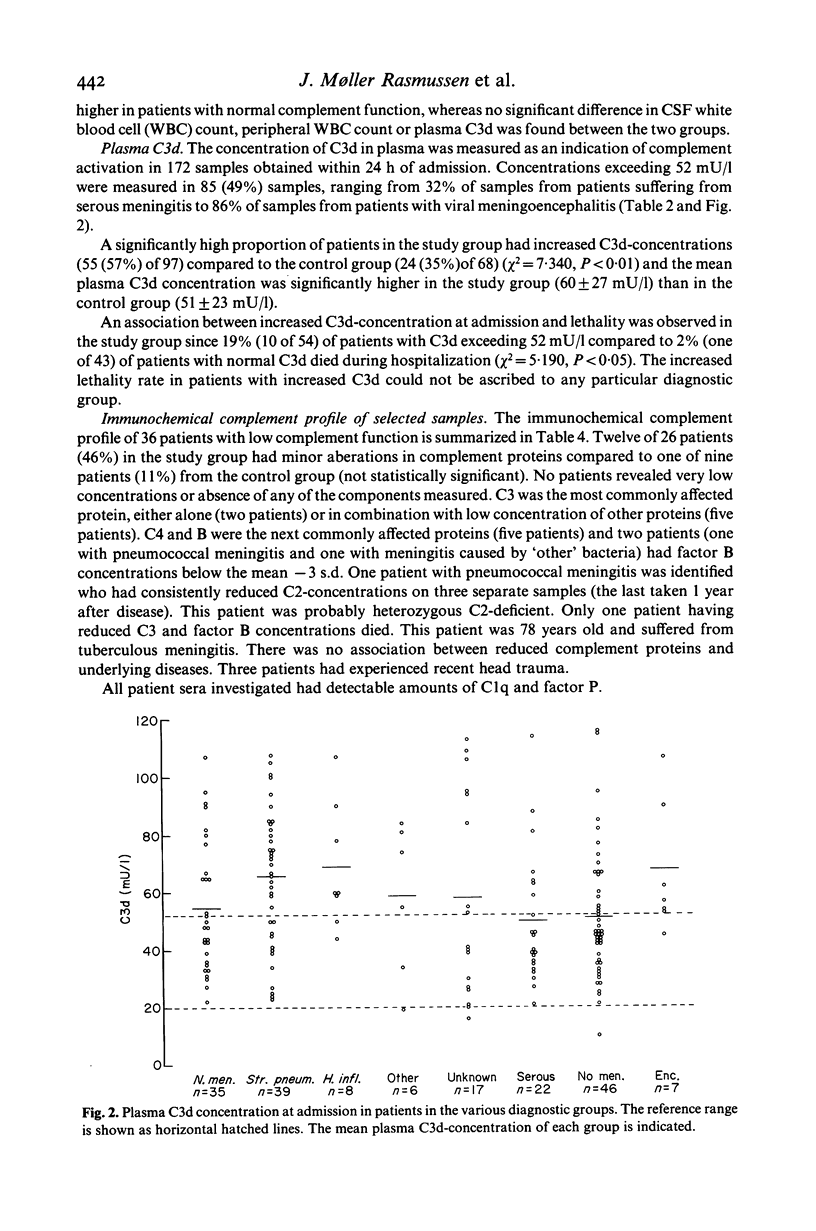
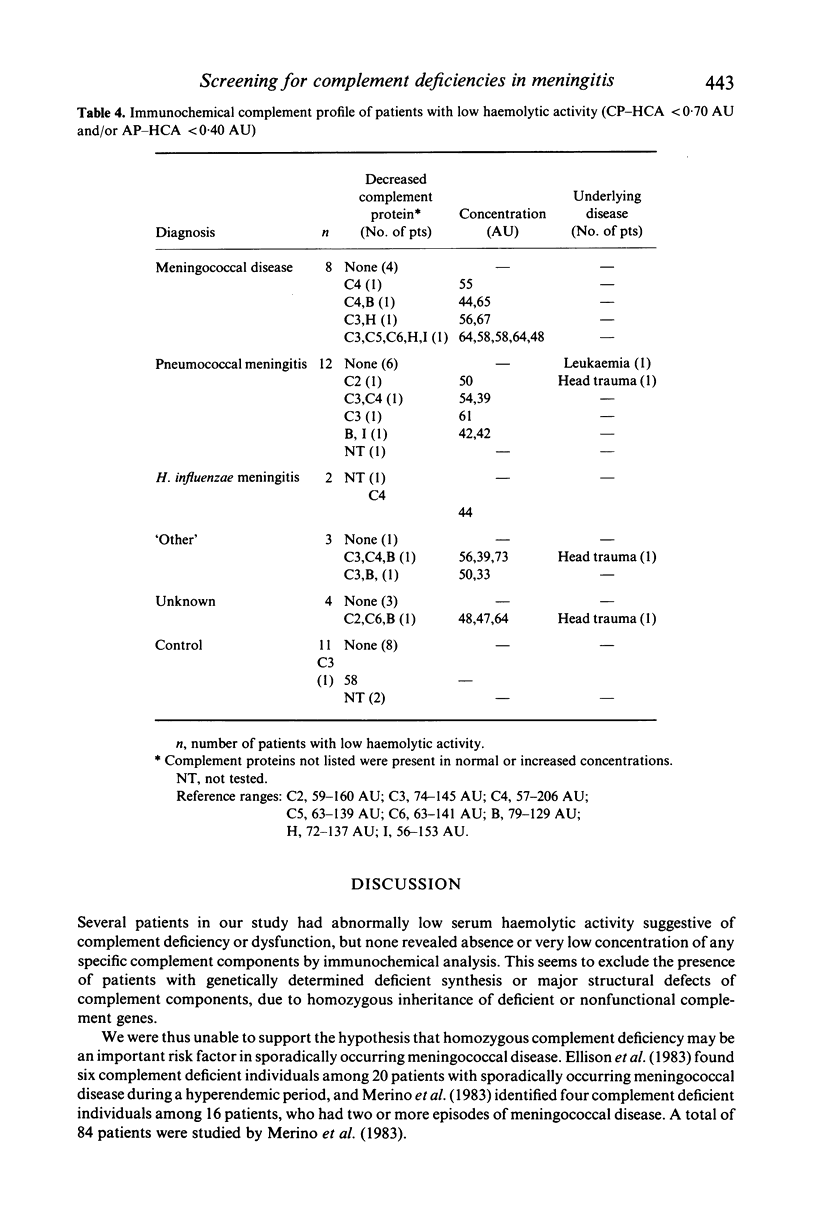
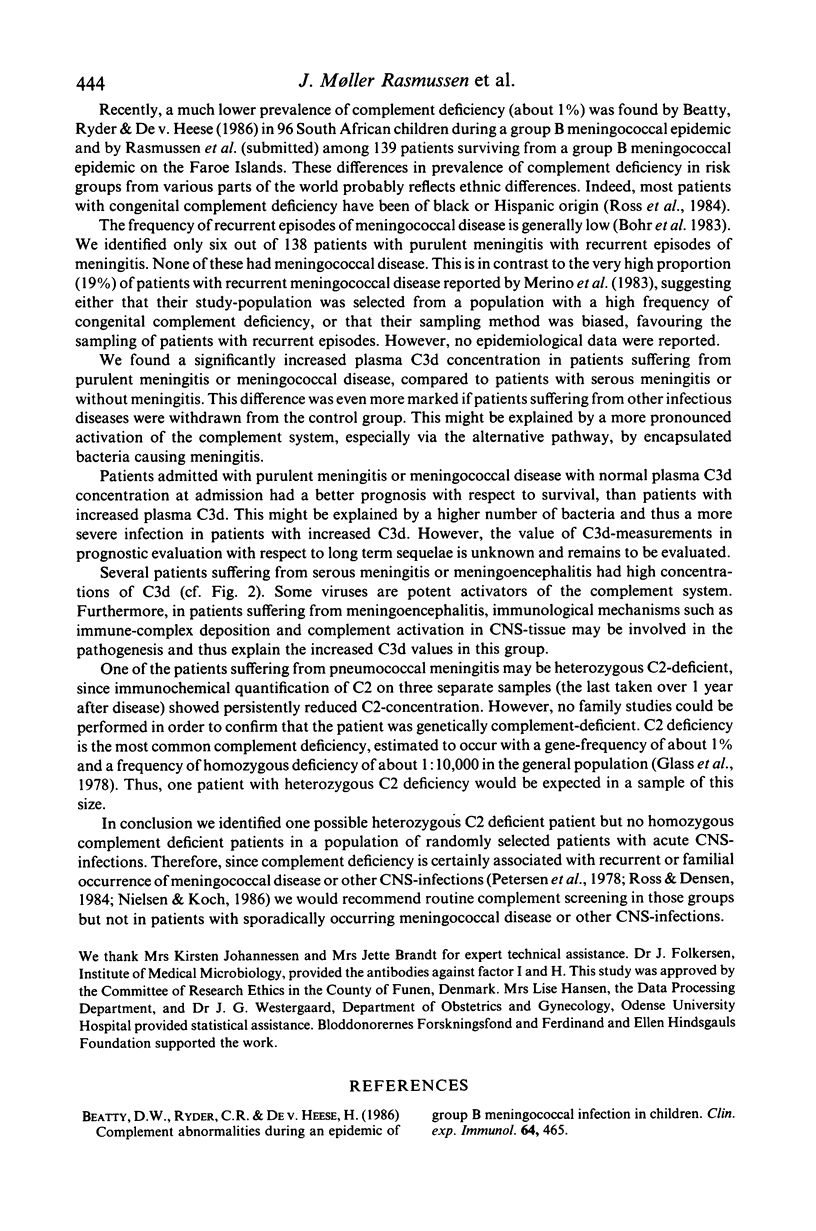

Selected References
These references are in PubMed. This may not be the complete list of references from this article.
- Brandslund I., Teisner B., Hyltoft Petersen P., Svehag S. E. Development and clinical application of electroimmunoassays for the direct quantification of the complement C3 split products C3c and C3d. Scand J Clin Lab Invest Suppl. 1984;168:57–73. doi: 10.3109/00365518409088734. [DOI] [PubMed] [Google Scholar]
- Ellison R. T., 3rd, Kohler P. F., Curd J. G., Judson F. N., Reller L. B. Prevalence of congenital or acquired complement deficiency in patients with sporadic meningocococcal disease. N Engl J Med. 1983 Apr 21;308(16):913–916. doi: 10.1056/NEJM198304213081601. [DOI] [PubMed] [Google Scholar]
- Guenther L. C. Inherited disorders of complement. J Am Acad Dermatol. 1983 Dec;9(6):815–839. doi: 10.1016/s0190-9622(83)70195-7. [DOI] [PubMed] [Google Scholar]
- Merino J., Rodriguez-Valverde V., Lamelas J. A., Riestra J. L., Casanueva B. Prevalence of deficits of complement components in patients with recurrent meningococcal infections. J Infect Dis. 1983 Aug;148(2):331–331. doi: 10.1093/infdis/148.2.331. [DOI] [PubMed] [Google Scholar]
- Petersen B. H., Lee T. J., Snyderman R., Brooks G. F. Neisseria meningitidis and Neisseria gonorrhoeae bacteremia associated with C6, C7, or C8 deficiency. Ann Intern Med. 1979 Jun;90(6):917–920. doi: 10.7326/0003-4819-90-6-917. [DOI] [PubMed] [Google Scholar]
- Ross S. C., Densen P. Complement deficiency states and infection: epidemiology, pathogenesis and consequences of neisserial and other infections in an immune deficiency. Medicine (Baltimore) 1984 Sep;63(5):243–273. [PubMed] [Google Scholar]
- Tappeiner G. Disease states in genetic complement deficiencies. Int J Dermatol. 1982 May;21(4):175–191. doi: 10.1111/j.1365-4362.1982.tb02069.x. [DOI] [PubMed] [Google Scholar]
- Teisner B., Brandslund I., Folkersen J., Rasmussen J. M., Poulsen L. O., Svehag S. E. Factor I deficiency and C3 nephritic factor: immunochemical findings and association with Neisseria meningitidis infection in two patients. Scand J Immunol. 1984 Oct;20(4):291–297. doi: 10.1111/j.1365-3083.1984.tb01005.x. [DOI] [PubMed] [Google Scholar]


